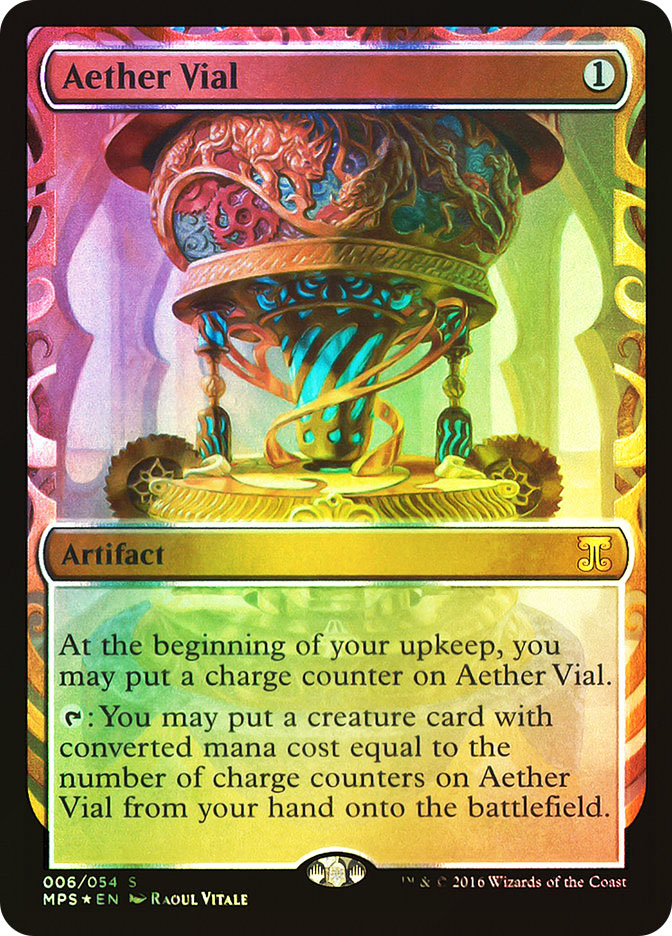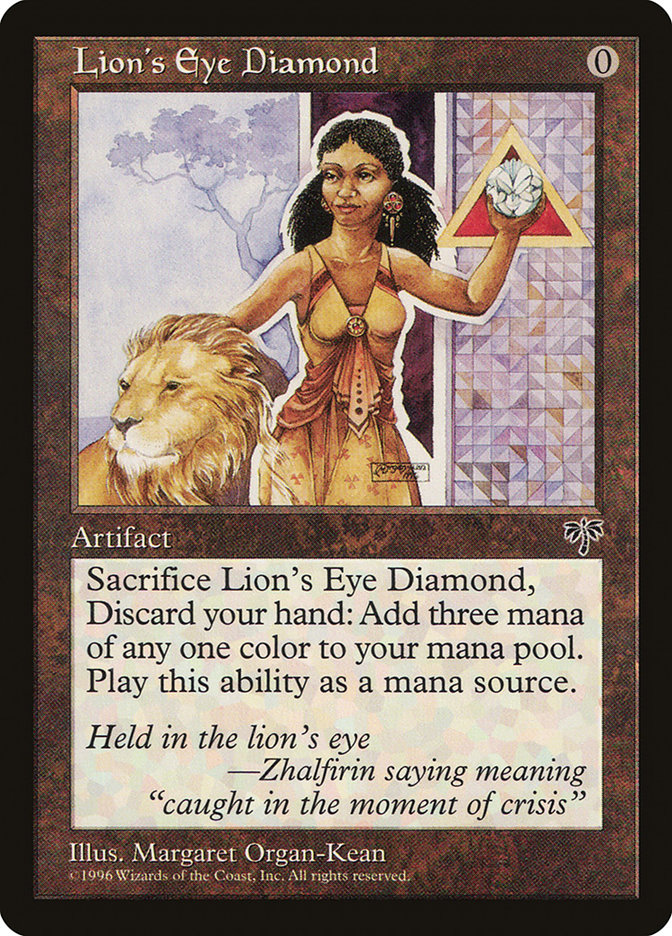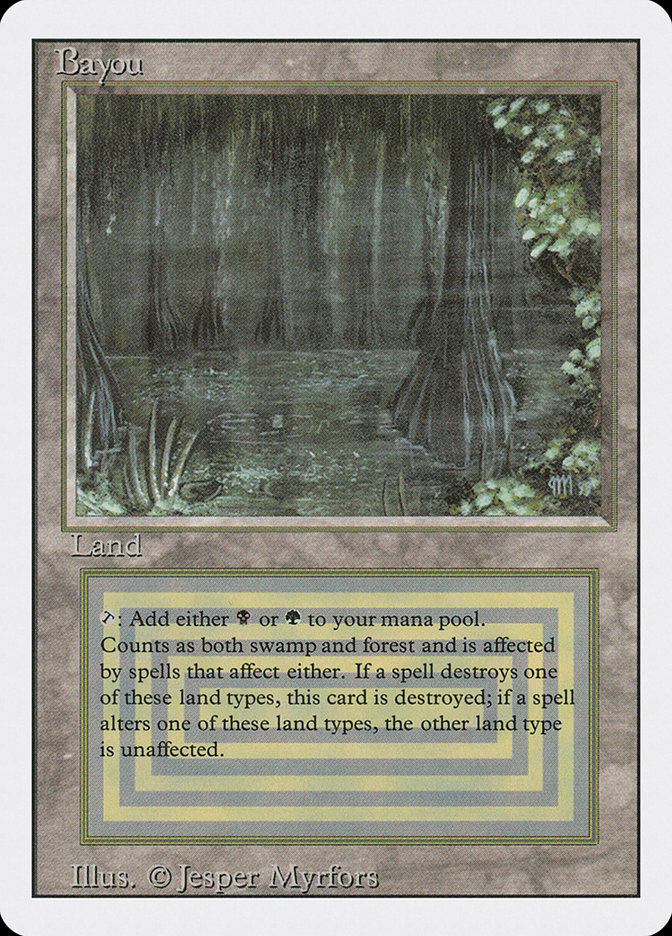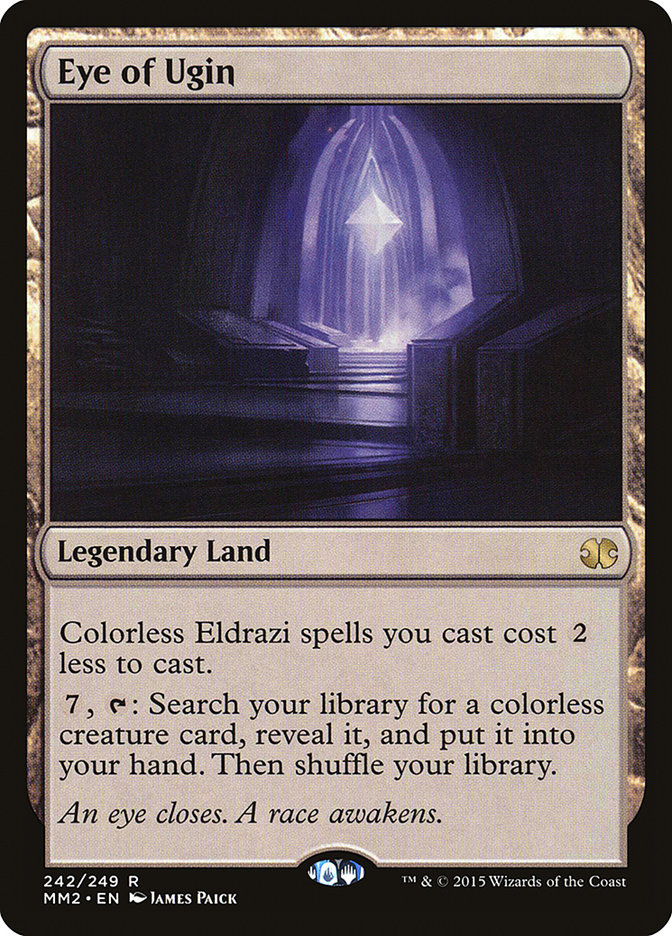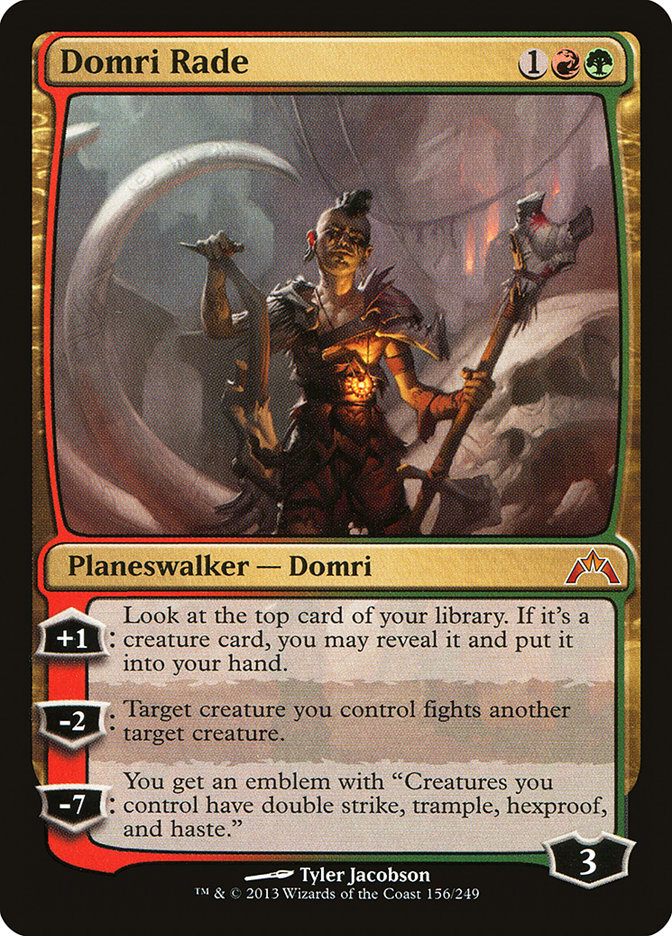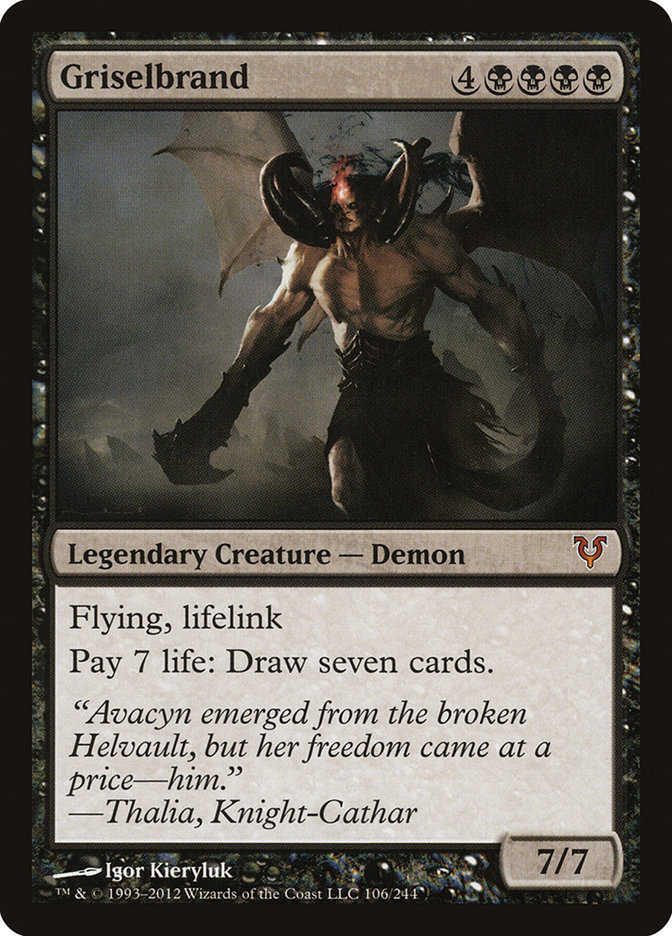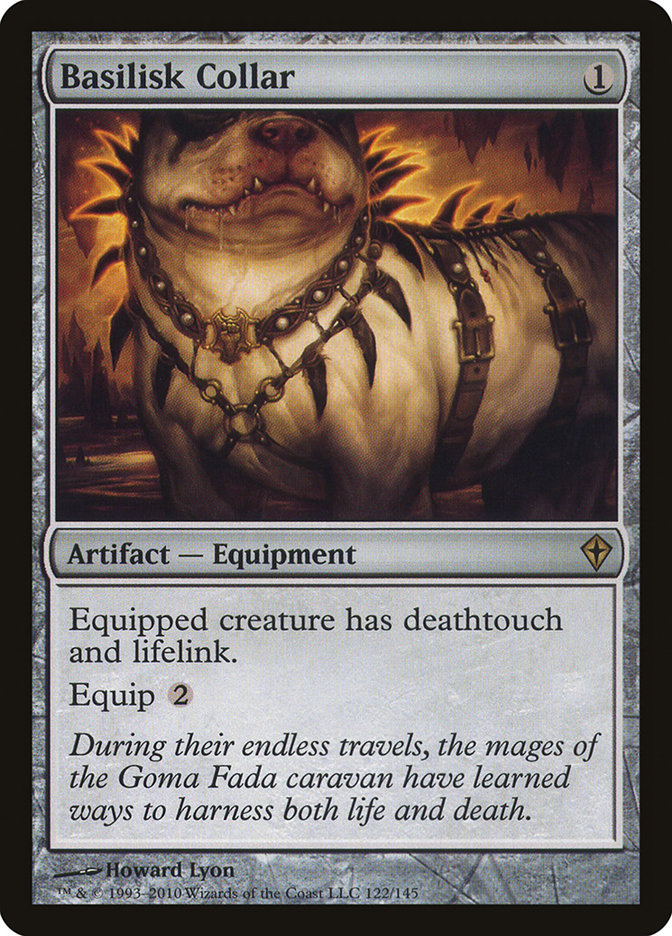A few weeks ago, I asked my Twitter followers (I’m @ChasAndres) what Modern topics they’d like me to cover in the coming days. I had been getting frustrated with all of the “Modern is dying!” chatter that seemed to be permeating social media, so I added the hashtag #NothingTooApoaclypticPlease in the hopes that it would keep the discussion somewhat positive.
It didn’t work. Nothing against my wonderful readership, but I still got several questions that basically amounted to, “Why invest in Modern if you can’t use your deck to make the Pro Tour?” And when I turned in my latest column, I found some of that same fear staring back at me from the comments section.
I was annoyed in the moment, but the truth is that this is a valid question for me to address in this column. After all, Standard is now the format of choice for Nationals, the World Magic Cup, and every Pro Tour. So what is the point of investing in Modern at all? Doesn’t it make more sense to sell your Modern collection now and use the money to buy top tier Standard decks for the next half-a-dozen seasons?
(Spoiler alert: the answer is no.)
Myth #1: “Wizards wants to kill Modern because they don’t profit from its secondary market!”
Riiiiiiight.
One of the most pervasive myths regarding the death of Modern is that Wizards of the Coast doesn’t need it because they don’t profit from it. After all, most people buy their Modern cards from stores like StarCityGames.com instead of trying to open them in booster packs.
This simply isn’t true, though. Modern Masters a direct attempt by WotC to profit from Magic’s secondary market, and it works spectacularly well.
Think about it this way: WotC releases between five and six Magic sets every year. Of these, four contain at least 90% new cards set in all-new (or heavily reworked) fantasy worlds. These sets make up the bulk of WotC’s sales, but they also make up the bulk of their costs. They have to pay people to design, test, and develop the cards as well as to create the world, paint the art, write fiction for the game’s story, market the set, etc.
WotC also designs and develops casual sets, like Conspiracy and the Commander series. The costs here are far lower from a development perspective because these sets tend to be at least 50% reprint-driven. I would also bet that they don’t spend as much time world-building as they do on their flagship sets.
Last, WotC prints sets in the Masters series. These are 100% reprints, though the company does commission new art and ensure that the set is balanced for limited play. Even still, these sets have (by far) the cheapest R&D costs associated with them. They also have the highest pack prices, by far, with an MSRP of $9.99/booster.
How can WotC get away with charging $10/pack for sets that cost very little to develop? It’s because they contain cards like Tarmogoyf, which sell for over $100 on the secondary market. In fact, as we learned last week, WotC seems to at least somewhat balance these sets around secondary market prices in order to make sure that you are enticed into buying a whole bunch of boosters. If the best cards in Modern Masters topped out at $30, who would play the booster pack lottery at $10/pack, knowing they were probably going to open Stoic Angel anyway? If WotC wants to keep Modern Masters going—and my guess is that they totally do, because it’s basically printing free money—they need to make sure that Modern is a well-supported format.
Myth #2: “Every decision that WotC has made recently has been about highlighting Standard. Forgive me, but I feel like WotC will give up anything—even Modern—if it helps sell packs of Standard-legal cards.”
You’re right that WotC has put Standard front and center recently. This is smart: Standard drives the vast majority of pack sales, brings people into the local stores, and is the format they will use to break into the eSports arena (should such a thing occur). Standard is WotC’s past, present, and future.
The good news for you Modern mages is that WotC also relies on your favorite format to help sell packs. On a conceptual level, the idea that your cards will hold value thanks to Modern play helps people justify the decision to spend $3.99 on that booster pack. If every card were worth $0 after rotation, Standard sales would go down.
On a more concrete level, the Masterpiece Series is specifically aimed at getting Modern players to buy packs while keeping Standard affordable. Without a viable Eternal format, these cards would be worth less and the initiative would be less successful.
The existence of Modern also allows WotC to shift focus whenever a Standard environment is below par. If Standard were the only competitive format, they would be completely exposed whenever another “Smuggler’s Copter vs. Emrakul, the Promised End” scenario developed. It behooves WotC to have at least two or three formats to promote at all times, allowing themselves to shift their focus depending on each format’s current health.
Myth #3: “I don’t need to play Modern anymore. That means nobody will play Modern anymore!”
Very, very few Magic players are driven solely by the desire to make the Pro Tour. Oh, sure, there are a lot of people who have that dream—I suspect most of you reading this fall into that camp—but for most of us, it’s a secondary goal. If all you want out of Magic is to prove that you are great at something, there are so many other things you could be doing that are easier and more profitable. No—the real reason we play Magic is because it’s a really fun game.
A small number of people will probably give up Modern now that it’s no longer a Nationals format. Think about it, though. Is that something that has actually affected you or anyone you know? Sure, you might have said to yourself, “Well, I guess I have one less reason to play Modern,” but is that really true? Were you really building a Modern deck to play in Nationals that you are now going to sell?
Truth is, people play Modern because they like Modern. It has its problems, sure, but it can be a refreshing alternative to a stale Standard format and it’s the only Eternal format where it’s easy to find a pick-up game wherever you are. And even though there are no Modern Pro Tours, there are plenty of Modern Grand Prix and SCG events—not to mention loads of Modern tournaments at most local game stores.
Will prices drop if Modern continues to fade out of the competitive sphere? Sure, but I don’t think that is going to happen. It’s also worth remembering that Doubling Season is a $70(!) card despite seeing no competitive play. Cards do not need to be played at the Pro Tour to be worth a ton.
Myth #4: “Legacy seems like it is less popular than it used to be, so it’s only a matter of time before the same thing happens to Modern. Bring on Frontier!”
The problem with Legacy is not endemic to all Eternal formats. In fact, it is something incredibly specific: the Reserved List.
When a card in Modern gets so expensive that the format becomes inaccessible to all but an elite few, WotC can throw it in a Masters set and tank the price by 30-40%. They can’t do that with Legacy, which is a big part of why there aren’t as many major Legacy events anymore. The format still has a hardcore following of die-hards, and I doubt it will ever go away, but it is hard for Legacy to grow as long as the Reserved List continues to exist.
The point I’m trying to make here is that many people seemed to think that Modern “replaced” Legacy, which means that something is going to come along soon that will “replace” Modern. Not true. WotC can keep reprinting Modern cards, which means that they can keep the format alive as long as they want to. While I do believe that there will eventually be a sanctioned format between Modern and Standard for the sake of variety, I see no reason why this would be a replacement for Modern. And, quite frankly, it would be a bad business move on WotC’s part. Nobody is paying $10/pack for Frontier Masters.
Myth #5: “Modern is dying because Modern Masters 2017 is going to suck, something I already know thanks to the art on the front of the booster packs.”
Domri Rade and Stoic Angel aren’t the most inspired choices, but we all knew that the set would have some clunkers, right? In fact, I would be massively more worried if Modern Masters 2017 contained every possible format staple.
As we all know, when a low-power set is released, Magic dies immediately.
That might tell me that WotC wanted to sell as many packs as possible before discontinuing the product and/or format. By keeping things modest, they’re setting themselves up for years and years of Modern Masters products left to come.
The other two cards appear to be Snapcaster Mage—which we all wanted—and Griselbrand, a card I predicted would show up. I also saw some pretty convincing Goblin Guide art kicking around the rumor mill, so that one’s likely in as well. As always, I expect the set to seem better than you think during the start of the week (when all the good cards get previewed) and worse toward the end, when the chaff is revealed. It’ll be a fine set, solid but not overwhelming, that will give us some (but not all) of our needed reprints.
Oh—and the contents of Modern Masters 2017 have nothing whatsoever to do with the current health or status of the Modern format.
Myth #6: “But look at the trend! First no Modern Pro Tour, then no Modern Nationals…I don’t care what their reasoning is, it’s clear that WotC has no faith in Modern!”
It’s easy to forget that large companies like WotC are reactionary and slow. In my opinion, the lack of high-profile Modern events is a direct response to the following two events:
- Community outrage over the Birthing Pod and Splinter Twin bans.
- The fact that the last Modern Pro Tour was just a pile of Eldrazi decks banging into each other until one of them won.
Forgot about this? It’s understandable—February of 2016 feels like a lifetime ago. If you can remember, WotC was worried about having Modern Pro Tours from the start because they were worried about the pros “solving” the format and making it boring for everyone else to play for months at a time. That’s why they felt the need to ban cards prior to the event, and that’s why they ultimately ditched the PT while banning Eye of Ugin after their worst fears were confirmed anyway.
The truth is that WotC didn’t stop holding Modern Pro Tours in order to phase out the format; they did it in order to ensure that the metagame stayed healthy and variegated. Now, you can argue that this approach is silly, but that doesn’t make it wrong. How do I know this? Because Aaron Forsythe spelled it out in the article where he talks about the end of the Modern Pro Tour. I see no reason to invent a conspiracy theory to explain an action that makes sense at face value.
Myth #7: “Okay, but does the reason even matter? There are fewer Modern events now. Prices will keep dropping, right?”
Maybe, maybe not. You know how it’s impossible to remember what it feels like to be happy when you’re sad? Everything sort of works like that. Injuries feel like they will never heal. Perfect days feel like they cannot end. But nothing lasts forever, and the only constant is change.
So yeah, it’s possible that Modern is in some sort of permanent downswing, but we need to remember that there are so many cognitive biases leading us in that direction. Negativity bias means that we are more likely to pay attention to bad news (no Modern at Nationals!) than good (Modern has had almost a half-dozen major events in the last two weekends alone!). Status quo bias prevents us from believing that the current trends can change. And the Bandwagon fffect means that you’re more likely to believe that Modern is in trouble because so many people are talking about it.
So yeah. Maybe Modern prices will keep dropping. Or maybe WotC will react to the current community climate by introducing more competitive Modern events in 2018. As Warren Buffett said (and I repeat constantly), “Be fearful when others are greedy, and greedy when others are fearful.”
This Week’s Trends
It was kind of a slow week in Standard, with only Traverse the Ulvenwald making significant gains. Meanwhile, cards like Saheeli Rai, Heart of Kiran, and Torrential Gearhulk are finally experiencing their post-PT drop-off. It’s a fairly slow decline, though, so there’s no need to panic-sell. Again, the cards in the top decks are likely to maintain a decent amount of value until a rogue deck or a banning shakes up the format.
What we know about Modern Masters 2017 so far: it has Domri Rade, Stoic Angel, and Griselbrand. It probably has Snapcaster Mage and Goblin Guide. Per our discussion last week, I’d sell all these cards ASAP as long as you are okay knowing that you will probably have to buy back in at 40-50% of current retail.
I hope you bought your Basilisk Collars last week, because they did spike to $20 after experiencing a breakout tournament alongside Walking Ballista like I had predicted. I wouldn’t be so quick to sell into the hype, either—this one’s probably not in Modern Masters 2017, and its performance is absolutely legit. It could even end up in the $25-$30 range at some point.
Also up from last week: Noxious Revival and Paradise Mantle, both thanks to Modern Puresteel Paladin decks. Again, I see no reason why these cards won’t continue to be in demand as long as the deck keeps putting up results. Neither card was bulk before this, but pull them out of your $1 box.
In the world of casual play, Argivian Archeologist saw a jump thanks to some speculation and buyout discussion. It’s a Reserved List card, but sell into the hype if you can. These cards tend to slowly drop over the next few months as demand begins to die down. Power Artifact seems like it’s the next thing being hyped, so grab yours now if you want to get in ahead of the speculation curve.


